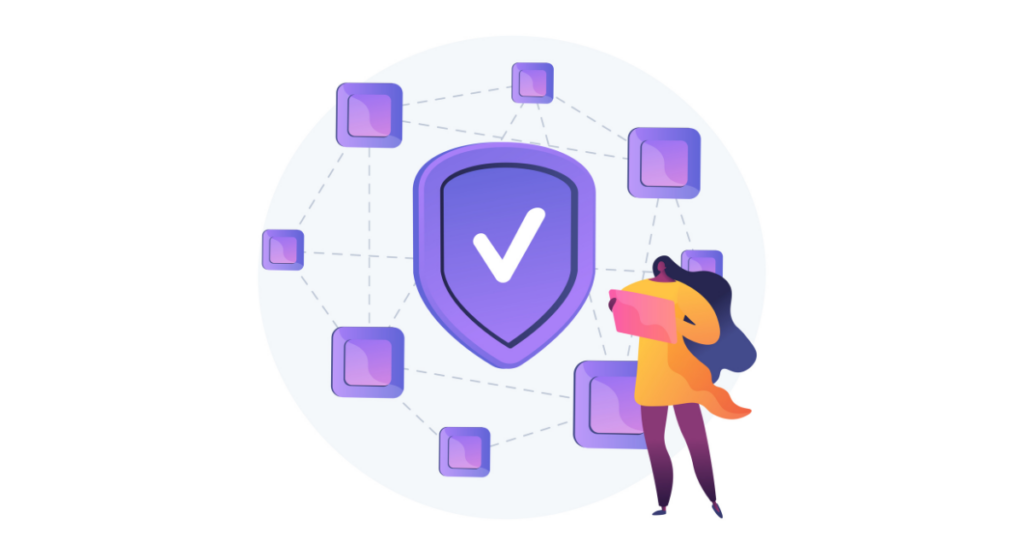Anyone involved in software development should understand verification vs validation testing. Despite often being talked about together, these two processes have different functions in quality assurance.
Verification sorts out whether the software is being built according to the requirements and validation, on the contrary, is such process of evaluating the software against real use cases.
Knowing the difference is crucial to create products that fulfil user expectations at a more reliable and higher quality billed. Knowing these requires for developers, QAs, and PMs could help them improve their dev process and the end product as well.
Understanding Verification Vs Validation Testing

What is Verification Testing?
In software development, verification testing is the process of taking the product design and testing it against the requirements, ensuring it is accurate, complete, and at every stage of the development process, compliant.
Some of these activities are reviews, inspections, and walkthroughs in which the team looks at the outputs document, design code, or software architecture before they run the code.
The main purpose is to discovery potential issues in designing part not coding, because fixing them design time rather than in coding time help them save a huge reduced costs and time savings.
What is Validation Testing?
Validation testing is an important part of the software development process that ensures that the end product satisfies the user needs, and complies with the intended use.
This phase of testing, takes place when the software is build and is tested for functionality, usability and performance using several intricate testing methods like unit testing, system testing, integration testing, user acceptance testing (UAT) performed by QA teams.
CONCLUSION Therefore, final validation testing is done so that, the software performs well in real life.
Key Differences between Verification and Validation Testing
Definition variances
The main distinction between verification and validation is within their definitions.
Verification: Versus Validating what based on what is going to be developed of most importance Verification is about looking at a work product of a development phase and checking whether it meets the requirement that was specified at the start of the development phase.
Validation is the process of checking the final product to make sure it meets the targeted requirements before shipping it out for use.
Objectives and goals disparity
The goals related to verification and validation are also significantly different. It also ensures that the software system meets the standards, processes, and procedures using verification during development.
Its primary aim is to identify defects earlier, when they are usually easier and less costly to remove. Validation, on the other hand, seeks to validate that the software meets the needs of the user, having in the end a quality product ready for use.
Methodologies contrast
Lastly, the methodologies used in verification versus validation testing showcase striking contrasts. Verification employs static methods such as document and code reviews, which do not involve code execution.
Validation uses dynamic testing methods where the code is actually executed in various environments and scenarios to simulate real-world use.
This fundamental difference highlights the focus on catching errors in the early stages with verification, versus ensuring applicability and correctness with validation.
Importance of Verification and Validation Testing

The importance of verification and validation testing in the software life cycle cannot be neglected, as both are very important to validate that a software meets it designed requirements and it is reliable and robust enough for use/working and deliver the expected results by end-users.
Verification testing is critical in the first place for a number of reasons. This guarantees that the product is being developed as per the set design and requirements.
Proactive measure finds the issues early which saves expensive dollar and time to fix the issues later in the development cycle.
On the other hand, Validation testing concerns transforming the product into progress to validate if it plays the role the way it is meant to be played or if it serves the users point of view and intention or not.
It serves as the last line of defense to ensure the software functions as intended in real-life, ensuring the software is ready for release. This improves not only user experience but also protects the image of the organisation from the disaster of producing a bad product.
Verification and validation testing together provide a basic discipline for software quality assurance and follow complementary yet different processes.
Reduced cost of development Improved quality of the product Compliance with industry standards Keeping the trust of your customer and happy customer.
Real-World Examples of Verification and Validation Testing
In everyday practice, both verification and validation testing manifest in various ways across different industries. Here are a few practical examples:
- In automotive, it could mean testing that the software in a car is interpreting signals from the sensors in the way in which it is supposed to.
This would follow on from the validation of physically driving the car in controlled and real-world environments to confirm these sensors and the software are performing to spec by detecting obstacles around them and making lane changes, for instance.
- For a mobile application, verification testing could be conducted on the app's security features to ensure they meet specified security standards before deployment.
Validation testing would follow, where the application is tested in real user environments to ensure it performs as expected under various network conditions and user interactions.
- In healthcare software, verification will ensure that all of the ways patient data will be handled meets regulatory standards, e.g. (HIPAA/Health Insurance Portability and Accountability Act), while validation will prove that for medical staff it will be easy to access and use the app in hospital settings and manage patient info without mistakes.
These examples demonstrate how integral both verification and validation testing are to creating and maintaining effective, reliable, and user-friendly software products across varied sectors.
Best Practices for Implementing Verification and Validation Testing
Tips for effective verification testing
Product requirement needs to be good in order to start the verification process. Another is the need to prepare a detailed verification plan because it can itself direct the process by stating what is to be tested, when to test, and how to test.
Build in periodic reviews and inspections to catch the errors early in the development cycle. This is also helpful in using automated tools that carry out repetitive and detailed tests, leaving the more complex and high-level tests to human testers.
Effective communication and understanding among team members are crucial to allowing validation testing on the right set of goals and results.
Strategies for successful validation testing
Validation testing reveals the suitability of the software to its purpose through the use of realistic scenarios simulating the actual use of the product.
Testing involving various aspects of users, including accessibility, usability, and other perspectives, should be done to confirm that the software can accommodate diverse user needs.
Evaluate both the functional and non-functional aspects of the software to confirm its performance, security, and usability.
On the other hand, feedback with stakeholders may improve the expectations and required features for the product software. Verification and validation testing comparison in testing tools An overview of the tools available for the verification testing phase.
Comparison of Verification and Validation Testing Tools
Overview of tools available for verification testing
There are many verification test tools available with various specials and features to suit requirements. For static analysis, tools such as SonarQube assist in the evaluation of source code quality and security, even in the absence of physical execution.
For Automated Functional Testing, Selenium and Tools-QA's TestComplete perform excellently in the execution of framework design tests available in various categories of browsers.
There are organized environments available that well work with most of these development tools, such as TestRail or Zephyr, in which you are able to manage test cases and track their execution.
Overview of tools available for validation testing
User scenario simulation tools and supporting performance analysis come in handy during validation testing. Very important in the validation of how software is working under stress and heavy resources load, load testing tools include JMeter and LoadRunner.
Part of usability testing may be enriched by tools like UserTesting and Lookback, allowing real users to interact with the software and comment on their experience.
While some analytics tools such as Google Analytics and New Relic come in handy after the release for overall product usage and performance tracking, others focus on user behavior and system efficiency to ensure that the software meets not only the functional requirements but also delivers a satisfactory user experience .
Challenges and Limitations in Verification and Validation Testing
Common hurdles faced during verification testing
One of the biggest challenges in this verification testing is trying to make sure that all the initial requirements are entirely and correctly written.
Indeed, projects are sometimes delayed automatically by the ambiguity or incompleteness of the requirements, which lead to test scenario deficiencies.
Moreover, the set strategies toward verification of whether the product will meet the agreed specifications may be crippled by the communication barriers that exist in translating the requirements to the developers, testers, and stakeholders.
The absence of resources and tools to simulate complex production environments leads to insufficient testing and, therefore, low quality of the product.
Common hurdles faced during validation testing
Validation testing faces its own set of challenges, notably integrating real-world usage conditions into the test environment. This type of testing requires accurate modeling of user behaviors and environments, which can be difficult to anticipate and reproduce.
Moreover, late-stage findings during validation can lead to significant changes in the product, disrupting timelines and budgets. Another recurring issue is ensuring the test team's understanding of user expectations and how these align with the product functionalities being tested.
Strategies to overcome these challenges
To effectively address these challenges, employing several strategies can be beneficial:
- Engage stakeholders early and often to refine requirements and ensure clear communication across all teams involved.
- Invest in robust requirement management tools that aid in tracking changes and maintaining clarity about what needs to be verified.
- Adopt an iterative testing approach to catch issues early in the development cycle during verification and continuously refine the product through user feedback during validation.
- Leverage modern simulation tools to create realistic and comprehensive testing environments.
- Conduct regular training sessions for testing teams to stay updated on the latest testing methodologies and tools.
By implementing these approaches, teams can enhance the effectiveness of both verification and validation tests, leading to a more reliable and user-centric product.
Book a Demo and experience ContextQA testing platform in action with a complimentary, no-obligation session tailored to your business needs.
Conclusion
Verification and validation testing are very essential processes in this rather complicated software development. Verification ensures that the product is built correctly from the initial development into what is needed and described by the specifications and design documents.
Validation, on the other hand, works on the finished product, checking whether the software carries out what it is supposed to do and meets the needs and expectations of the user.
Using both verification and validation testing methodologies to make sure that software is functioning as intended does two things: significantly reduces the cost of fixing bugs after deployment and reduces the time it will take to fix bugs after deployment.
If both these differences are well understood and put into practice, the end result will be a product that not only is made correctly, but also works correctly when used by customers. A dual approach is a must if, at all, quality software that is user-friendly and robust is to be delivered.
Also Read - What is Test Driven Development? Pros, Cons and Examples
